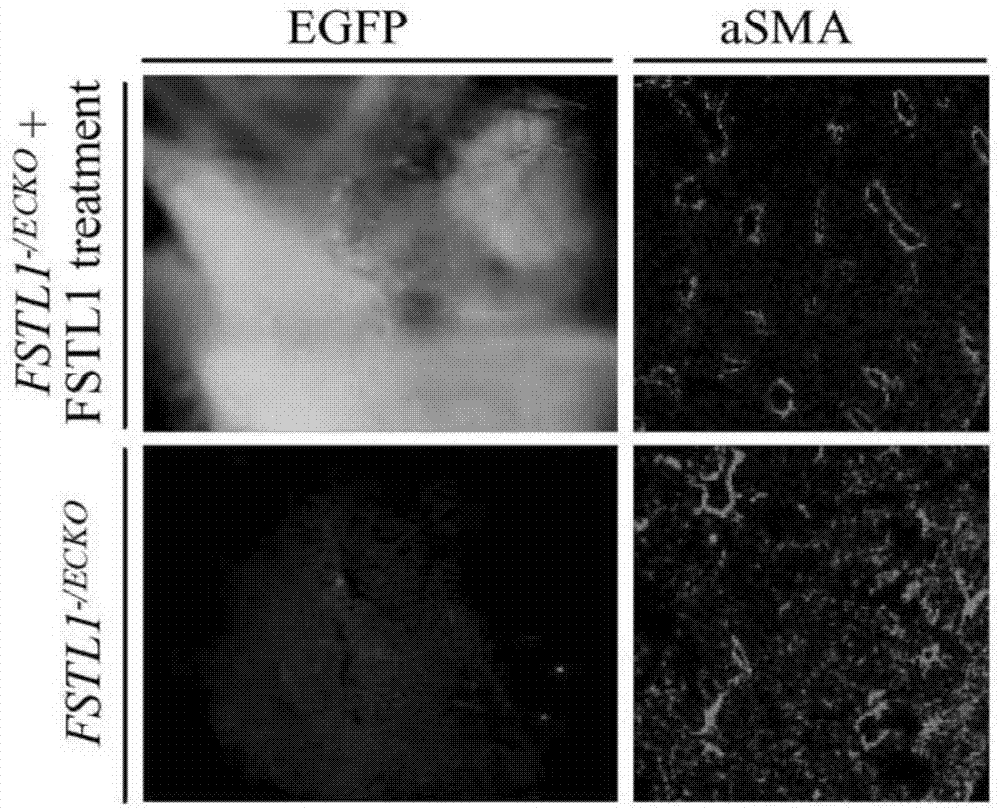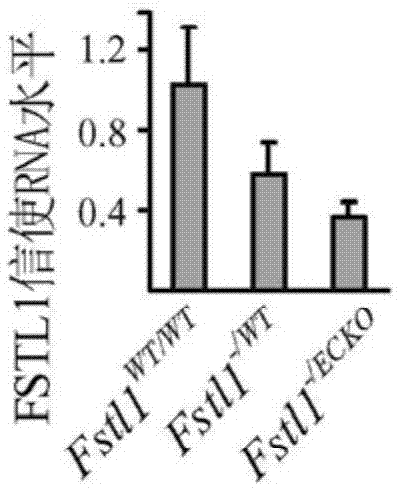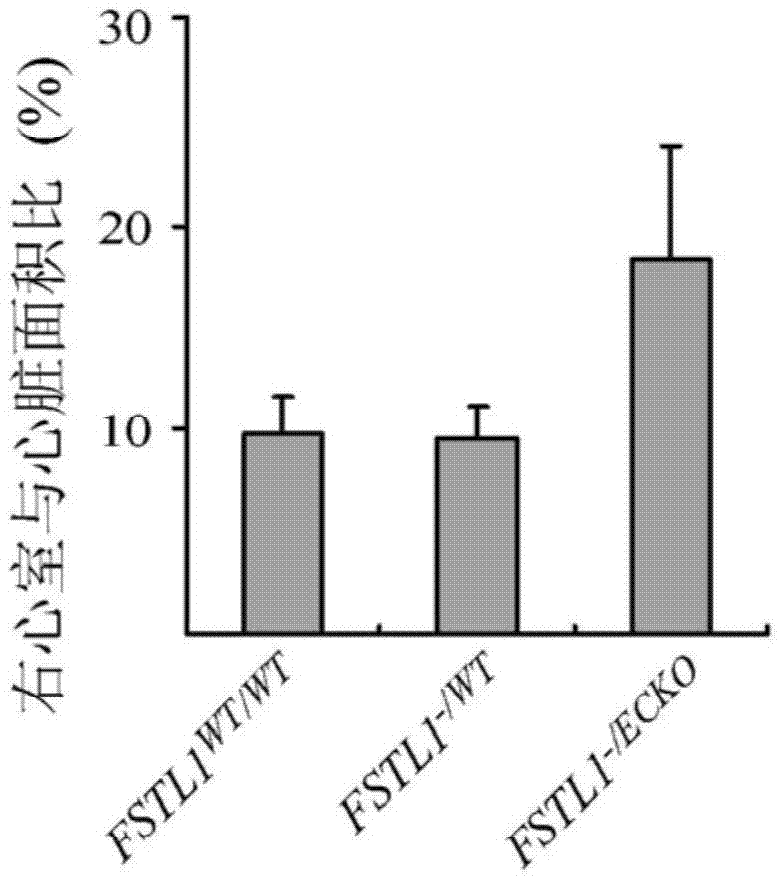Protecting functions and applications of FSTL1 in anti-fibrosis steady-state regulation of tissues such as livers
A FSTL1, tissue fibrosis technology, applied in the field of anti-fibrotic homeostasis regulation and anti-right ventricular dilation drugs, can solve the problem that the pulmonary arterial hypertension model has not been widely used and so on
- Summary
- Abstract
- Description
- Claims
- Application Information
AI Technical Summary
Problems solved by technology
Method used
Image
Examples
Embodiment 1
[0064] Example 1 Establishment of vascular endothelial cell-specific Fstl1 knockout mouse model
[0065] with Fstl1 + / - Mice (B6 background, provided by Nanjing Animal Model Institute) were mated with Tek-cre mice to obtain Fstl1 + / - , Tek-cre mice, and then use this mouse with Fstl1 Flox / Flox Mice mated to Fstl1 Flox / - , Tek-cre, this mouse is used as experimental mouse (also known as Fstl1 in the present invention - / ECKO ), using littermate gene knockout heterozygous (also known as Fstl1 - / WT ) or wild mice (also known as Fstl1 WT / WT ) as a control mouse.
[0066] Take fresh mouse liver, lung and kidney tissues, wash them in PBS, freeze them quickly in liquid nitrogen, and store them in a -80°C freezer for RNA extraction and protein preparation; the rest of the tissues were fixed overnight in 4% PFA , Tissue embedding and sectioning were performed by conventional histological methods for histological analysis. The knockout efficiency of Fstl1 was detected by Western B...
Embodiment 2
[0067] Example 2 Establishment of a mouse model for systemic inducible Fstl1 gene knockout
[0068] with Fstl1 + / - Mice mated with transgenic mice expressing UBC-CreERT2 to obtain Fstl1 + / - ; UBC-Cre / ERT2 mice, and then use this mouse with Fstl1 Flox / Flox Mice mated to Fstl1 Flox / - ; UBC-Cre / ERT2 (also referred to as Fstl1 in the present invention - / iKO ), this genotype mouse was used as an experimental mouse, and the Fstl1 obtained at the same time Flox / + ; UBC-Cre / ERT2 as a control mouse (Control).
[0069] Mice can induce Fstl1 gene knockout at different stages after birth, including neonatal mice (birth day 1-4, P1-P4), and different stages of growth and development, including adult mice, to produce liver fibrosis that can simulate clinical human occurred in animal models. The preparation method of the mouse Fstl1 gene-induced knockout model is as follows:
[0070] After the mice were born (days 1-4, P1-P4), the mice were injected with tamoxifen (60ug per mouse) thr...
Embodiment 3
[0071] Example 3 Vascular endothelial cell-specific Fstl1 knockout mouse liver fibrotic disease model
[0072] In the process of liver fibrosis, extracellular matrix mainly composed of collagen accumulates in large quantities. Three weeks after birth, liver tissues were taken from mice and fixed in 4% paraformaldehyde PFA for 2 hours, then incubated overnight in 20% sucrose solution, and then tissue-embedded and sectioned, and stained with Sirius red. The specific method is briefly described as follows : Take Sirius red dye Sirius red (purchased from Sigma company) 0.5g, dissolve in 500mL of picric acid (purchased from Shanghai Sangong, product number PB0716), and store at room temperature until use. Using Sirius red staining analysis, it was found that knocking out Fstl1 in vascular endothelial cells led to a significant increase in collagen content in liver tissue ( Figure 4 , red represents Sirius red staining of collagen in the liver). In addition, hydroxyproline is a m...
PUM
 Login to View More
Login to View More Abstract
Description
Claims
Application Information
 Login to View More
Login to View More - R&D
- Intellectual Property
- Life Sciences
- Materials
- Tech Scout
- Unparalleled Data Quality
- Higher Quality Content
- 60% Fewer Hallucinations
Browse by: Latest US Patents, China's latest patents, Technical Efficacy Thesaurus, Application Domain, Technology Topic, Popular Technical Reports.
© 2025 PatSnap. All rights reserved.Legal|Privacy policy|Modern Slavery Act Transparency Statement|Sitemap|About US| Contact US: help@patsnap.com



